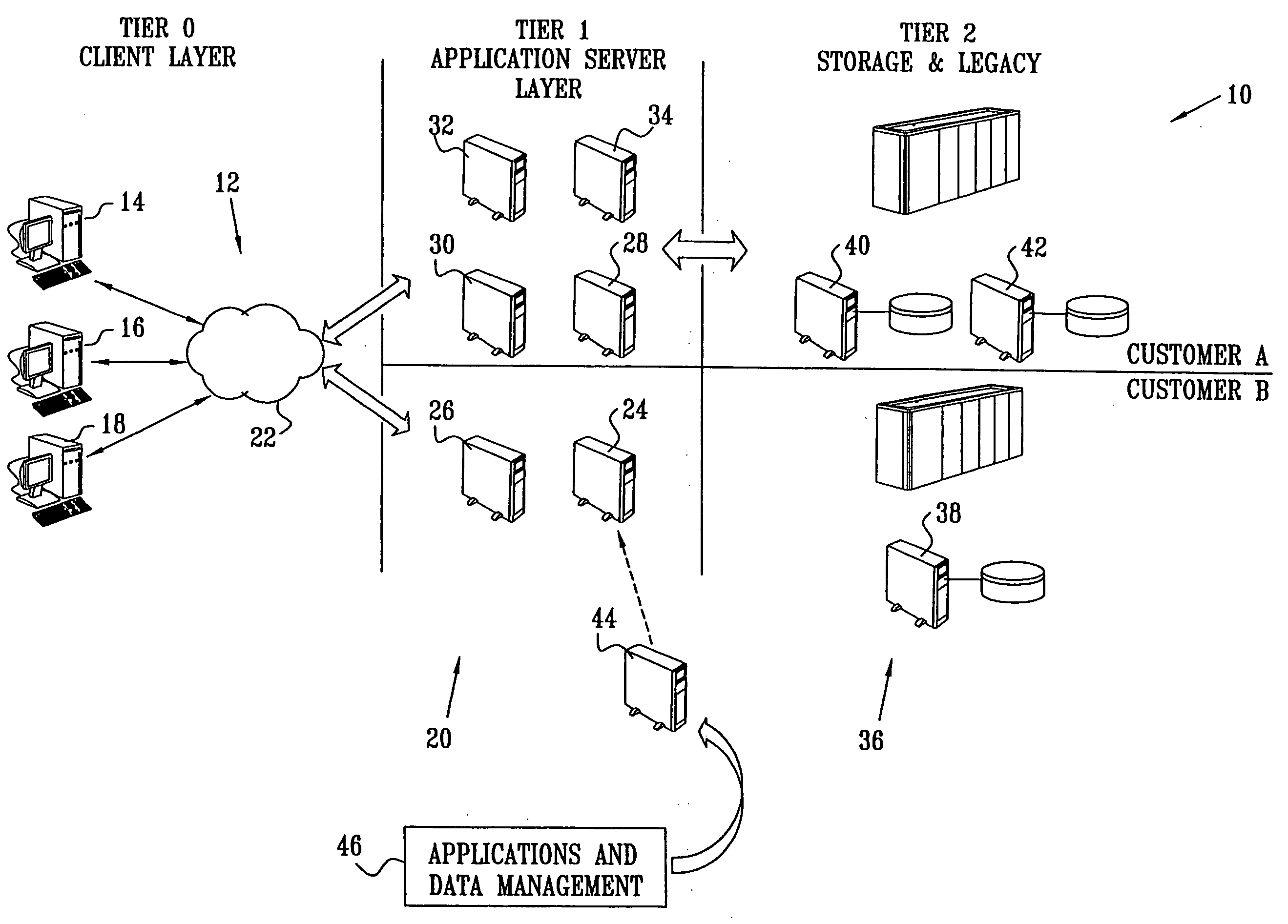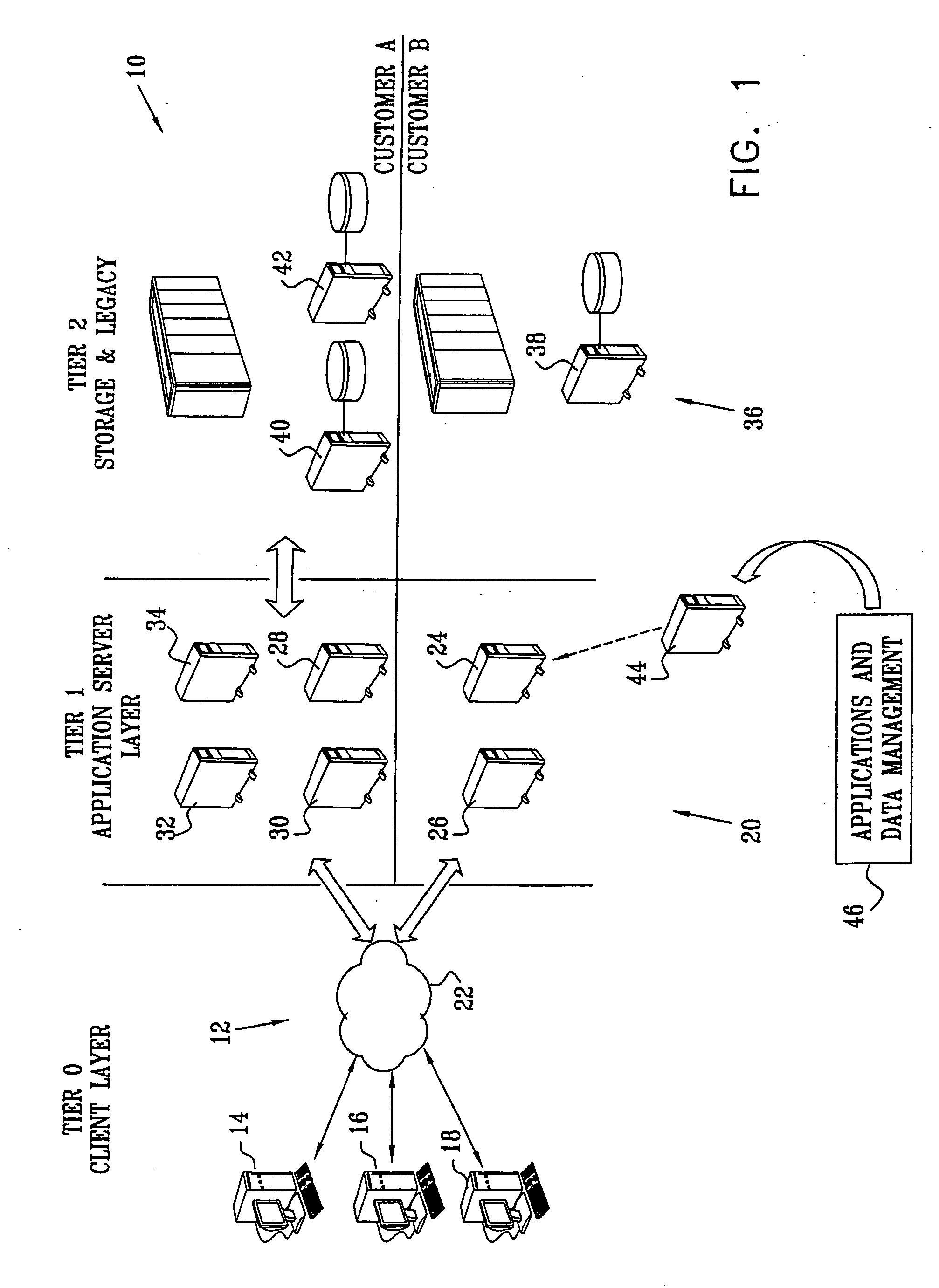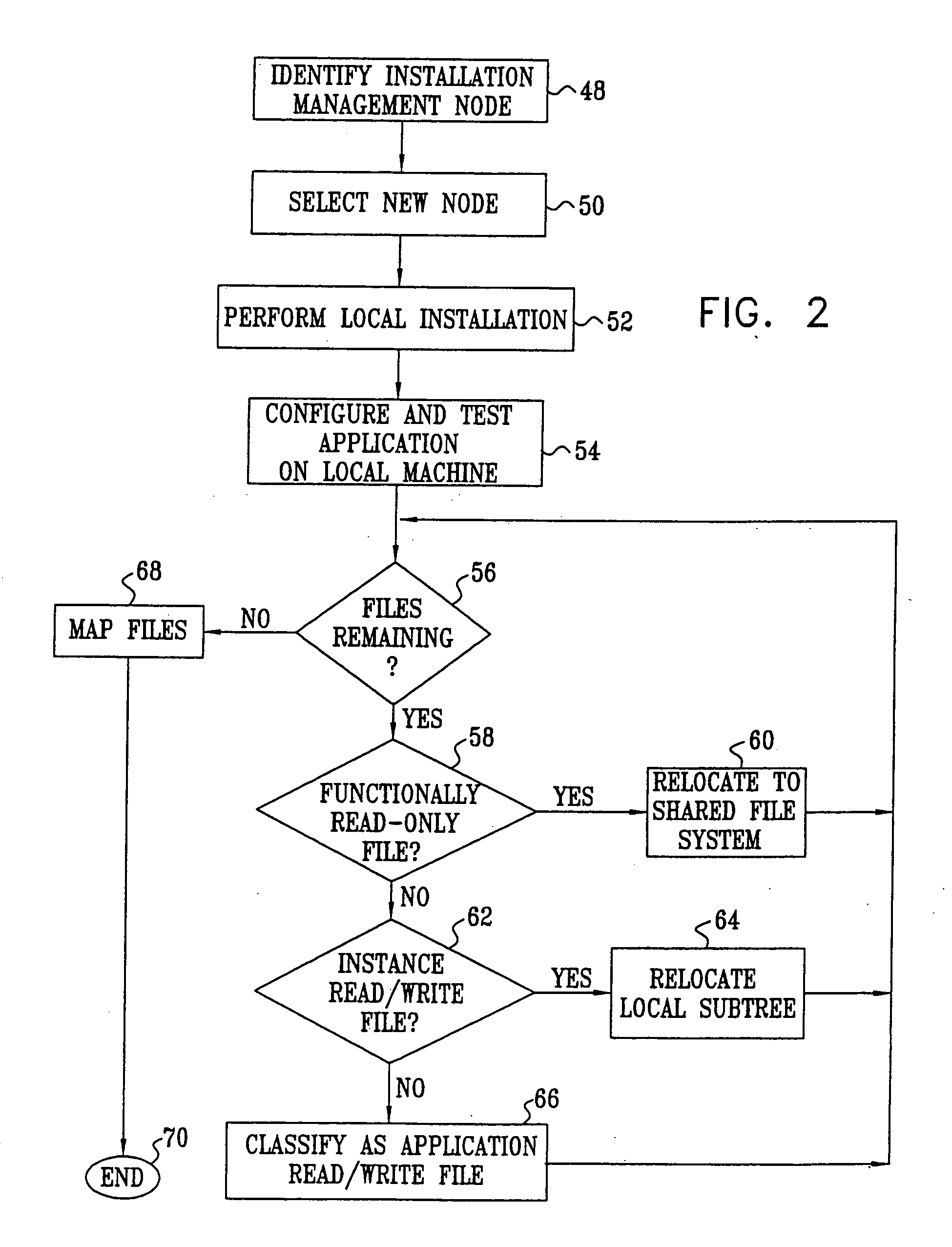Efficient application deployment on dynamic clusters
a dynamic cluster and application technology, applied in the field of clustered computer systems, can solve the problems of time-consuming process of bringing up a new node into an existing cluster, too time-consuming to be practical, and content management becomes difficult, so as to reduce the number of new applications in a node and speed up the deployment of new nodes in a cluster
- Summary
- Abstract
- Description
- Claims
- Application Information
AI Technical Summary
Benefits of technology
Problems solved by technology
Method used
Image
Examples
example 1
[0127] Example 1 illustrates an installation of the above noted Apache Web Server using the technique outlined in Listing 1. The configuration file is shown in Listing 2. The directory structure on the volume / remote / filesystem1 / Apache is shown in Listing 3.
Listing 2# My Apache Site / / remote / filesysteml / Apache / mklink / remote / serverl / Apache / addMimeTypes.sh / home / httpd / remote / filesystem2 / WebPages / mklink / var - mktree
[0128]
Listing 3 / etc / etc / httpd / / etc / httpd / conf / etc / logrotate.d / home / home / httpd / cgi-bin / home / httpd / html / home / httpd / icons / usr / usr / bin / usr / lib / usr / lib / apache / usr / man / usr / man / man1 / usr / man / man8 / usr / sbin / var / var / cache / httpd / van / log / van / log / httpd
[0129] The mapping algorithm will first mark the directory / var as a mktree directory. The significance of this designation is that any directories on the remote file systems that map to the directory / var will be created. There is no linking between such mapped directories to the remote file system.
[0130] Next, the algorithm will wal...
example 2
[0141] Example 2 involves the installation of some Perl CGls along with the Apache Web Server. The configuration file is shown in Listing 8.
Listing 8# My CGI Enhanced Apache Site / / remote / filesysteml / Apache / mklink / remote / filesysteml / Apache / addMimeTypes.sh / home / httpd / remute / filesystem2 / Webpages / mklink / var - mktree / home / httpd / remote / filesystem3 / PerlCGIs / mklink / remote / filesystem3 / PerlCGIs / reconfigureApache.sh
[0142] This example enhances Example 1 by adding PerlCGI files, which install in the directory / home / httpd / cgi-bin, and update the Apache config files to include support for PerlCGIs.
[0143] In Example 1, the directory / home / httpd / html was created because of the second entry in the configuration file (Listing 2). In this example, the link / home / httpd / cgi-bin will be removed, and instead all the files and directories in the directory / remote / filesysteml / Apache / home / httpd / cgi-bin will be linked to from the a newly created directory / home / httpd / cgi-bin. Then, all the files ...
PUM
 Login to View More
Login to View More Abstract
Description
Claims
Application Information
 Login to View More
Login to View More - R&D
- Intellectual Property
- Life Sciences
- Materials
- Tech Scout
- Unparalleled Data Quality
- Higher Quality Content
- 60% Fewer Hallucinations
Browse by: Latest US Patents, China's latest patents, Technical Efficacy Thesaurus, Application Domain, Technology Topic, Popular Technical Reports.
© 2025 PatSnap. All rights reserved.Legal|Privacy policy|Modern Slavery Act Transparency Statement|Sitemap|About US| Contact US: help@patsnap.com



